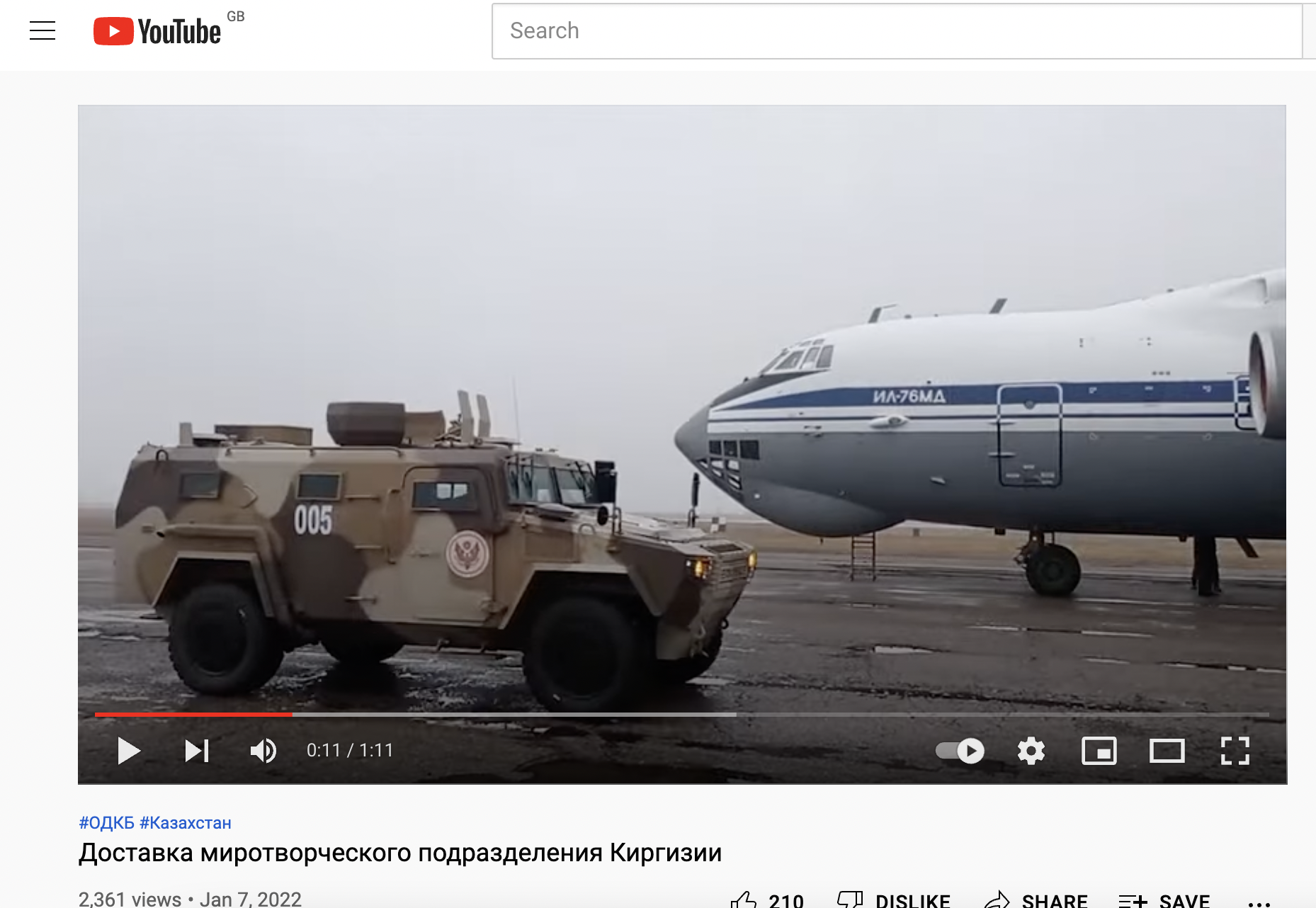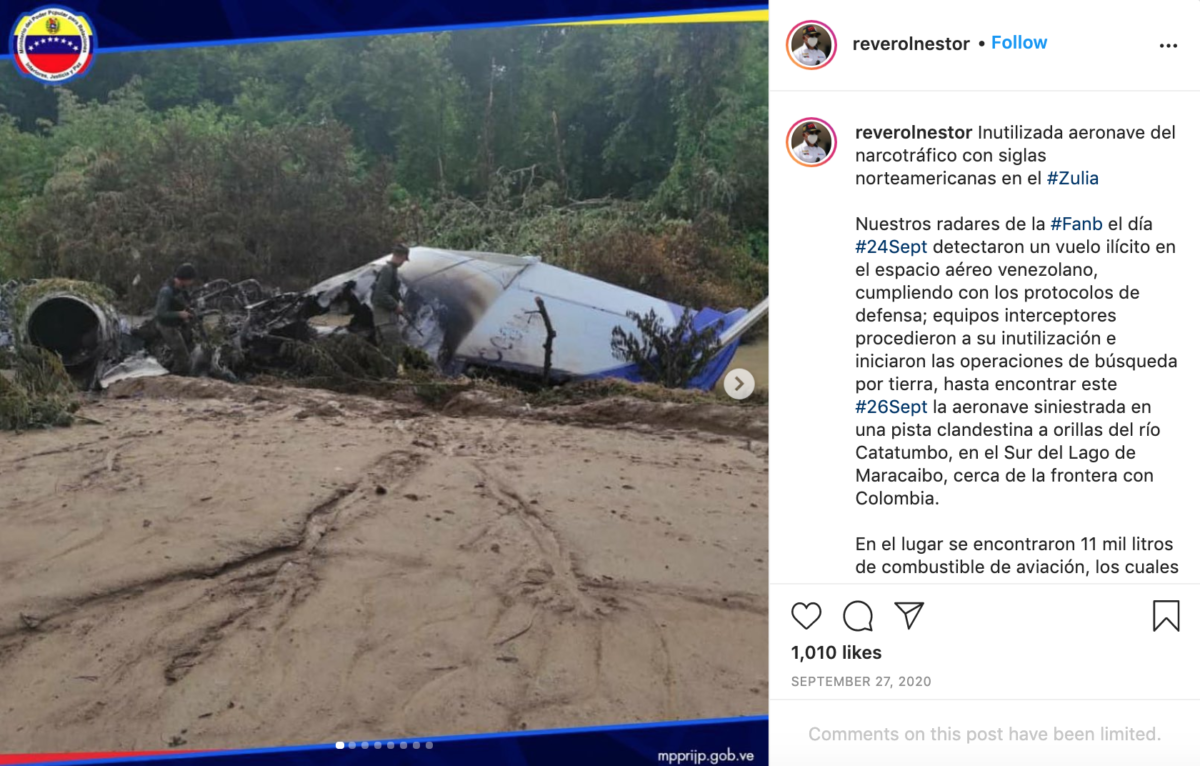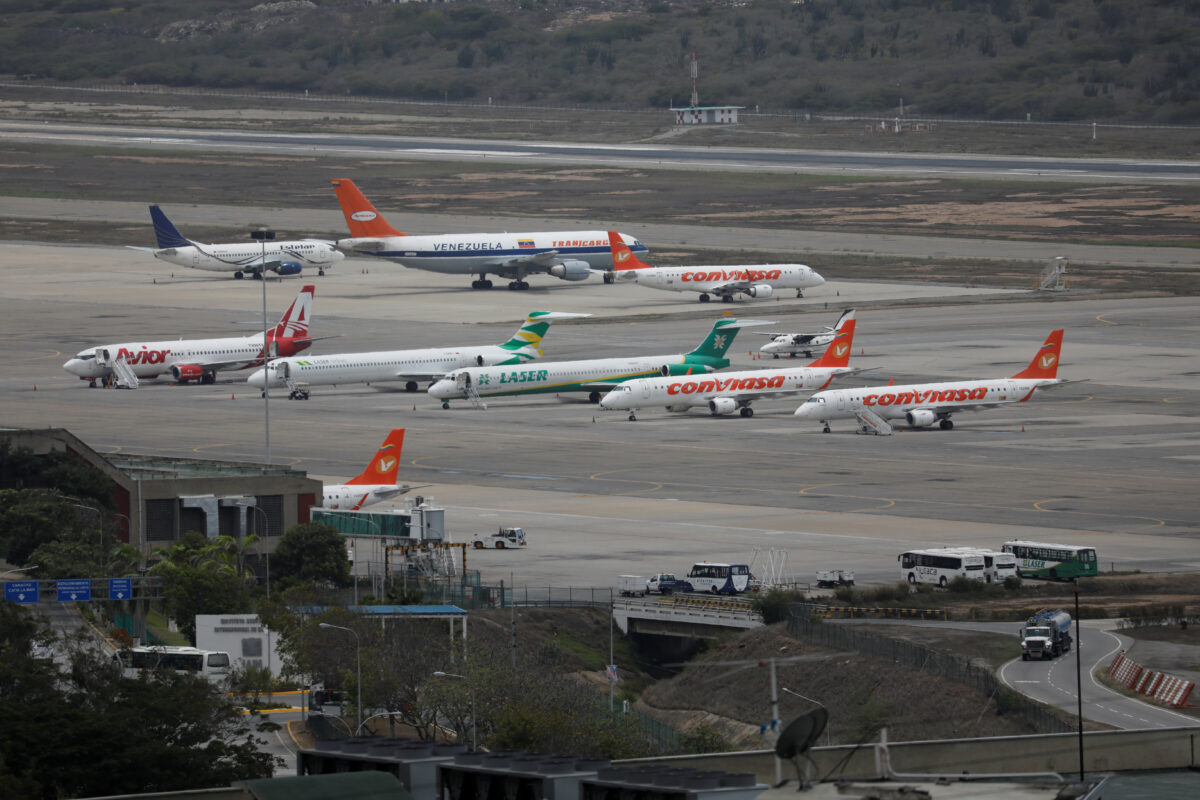Launching an Open Source Flight Database for Kazakhstan in Wake of Protests
As the crisis in Kazakhstan has unfolded over recent days, open source researchers have again turned to social media and other online resources to make sense of events from afar. As Bellingcat has previously noted, flight tracking websites are a key part of this digital toolkit. The ability to follow, in real time, where high profile individuals, cargo flights, or even transport of soldiers to and from a conflict zone can provide crucial insight into a developing situation.
For example, in Kazakhstan rumours have spread about the whereabouts of former President Nursultan Nazarbayev, with local media alleging that he has left the country with his two daughters. For now, claims such as these remain mere speculation – which is why a detailed database of flights may be a first step to assessing them.
According to Joanna Lillis, a Kazakhstan-based journalist and author of a recent book about the country’s politics, “it wouldn’t be surprising if some members of the elite have left the country or were trying to urgently flee. They can see an angry mood among protesters and are worried about their fates if somehow protesters get hold of them”, Lillis said in an interview with Bellingcat.
Military planes from neighbouring Russia have also headed towards Kazakhstan in recent days as part of an agreement struck by the regional Collective Security Treaty Organisation to help regain order, something which can again be monitored and tracked by flight monitoring platforms.
Bellingcat has thus launched an open source database of noteworthy flights to and from the country’s airports in a bid to better understand the recent and evolving dynamics in Kazakhstan. The database, entries for which start on January 3, is open to use and continues to be updated at the time of publication.
You can view the database here.
How Does the Database Work?
Bellingcat has been monitoring flights going into and out of airports in Kazakhstan since protests first broke out. We have also been keeping track of flights from Bishkek, the capital of neighbouring Kyrgyzstan, which is just four hours’ drive from the Kazakh city of Almaty where dozens are reported to have been killed.
While there are many flight tracking services on the market, we used FlightRadar24 to capture the data detailed in our spreadsheet given the company’s strong coverage of Central Asia. Most of the data was collected via live-monitoring of the site and using FlightRadar24’s playback function.
Regular, scheduled flights and cargo flights are not included in our database.
Whenever we noted the movement of a business jet or a military aircraft, we populated a row on our spreadsheet with details provided by FlightRadar24.
Information includes: aircraft registration number, aircraft type, owners, country of registration, callsign, route, time of departure (which can also be approximate). Some jets, interestingly, displayed no data on the flight tracking service except for the fact that an aircraft was flying.
The “~” sign is used for approximate locations or time. For example, if a plane disables tracking on its way to the city of Nursultan, we can assume that the destination was likely Nursultan, hence the ~NUR tag in the Route column.
The spreadsheet consists of sheets corresponding to the dates.
What’s Going on in Kazakhstan?
On January 2, protests broke out in the west of the country in response to the controversial removal of a cap on gas prices. These came on the back of long-held grievances about economic inequality and authoritarian repression, rapidly spreading to other provinces – including the largest city and former capital Almaty. Protesters have since forced their way into government buildings, occupied the airport in Almaty, and violently clashed with police and security forces. Kazakhstan’s Interior Ministry has stated that 26 “armed criminals” have been killed. Over 2,000 protesters have reportedly been arrested.
President Kassym-Jomart Tokayev accepted the resignation of his government on Wednesday, dismissing several key officials on January 5. Importantly, Tokayev removed his predecessor Nursultan Nazarbayev from his position in the National Security Council. The former president ruled Kazakhstan from the waning years of Soviet rule until handing over to Tokayev in 2019 – his influence has since remained significant, though Tokayev’s recent acts may speak to a widening rift in Kazakhstan’s political elite against the backdrop of protests.
On January 7, Tokayev described protesters as “bandits and terrorists”, acknowledging that he authorised “lethal force” against them. At his request, ‘peacekeepers’ from the Collective Security Treaty Organisation (CSTO) have since arrived in the country, most of them Russian.
Thus a week since the protest began, instability continues at the highest echelons of power.
What Flights Have Been Seen so Far?
On January 4, just two days after the protests began, we saw that a Bombardier Challenger 604 private jet flew from Almaty to Geneva. This aircraft’s past flight record shows trips to several European countries, Russia, the Maldives and Dubai. However, the plane is most frequently shown to visit Nur-Sultan and Almaty. With further research, it may be possible to find out more clues about this flight or who the owner of this aircraft is.
Other aircrafts share less information, but tracking them can still provide tantalising detail. On 5 January, between 10:00 and 11:00 UTC for example, a Bombardier Global 6000 with no registration number and no other identifying details was spotted flying from Almaty. By monitoring its journey, we found that it landed at Farnborough Airport just outside London, a common destination for private jets coming to the UK.
The next day, at around the same time, a Bombardier Global 6000 with no registration number or details (it is unknown if this is the same aircraft that flew the previous day) can be tracked flying to Farnborough. These flights with no registration number remain mostly a mystery. But logging them remains a worthwhile exercise for potential future reference and investigation.
With troops from neighbouring Russia and Kyrgyzstan on the way to Kazakhstan as part of an agreement struck by the regional Collective Security Treaty Organisation, it also comes as no surprise to see Russian military aircraft heading towards Kazakhstan.
Such aircraft can often be seen disabling their tracking. In one instance, we saw an Ilyushin IL76MD gaining altitude near Ulyanovsk, Russia at 05:16 UTC on January 6. This more than likely means it took off somewhere nearby with tracking switched off.
After 25 minutes in the air, It disappears from the radar while heading in the direction of the Kazakhstan border.
At 07:57 UTC, it is spotted for seven minutes close to Almaty heading in the direction of the city. At 13:56 UTC it is spotted again, this time for three minutes, flying away from the Almaty region towards Ulyanovsk, where it is spotted again five hours later (17:01 UTC).
This likely means the Ilyushin stayed in Almaty for between five and six hours.
On YouTube we found a video uploaded by Russia’s Ministry of Defense showing military vehicles being boarded on a plane to send off to Kazakhstan.

Video from Russia’s MOD shows military vehicles boarding a Ilyushin IL76MD.
These were published on January 7 and match the model of the Ilyushin aircrafts detailed on flightradrar24.
“Keep watching the skies”
If you’re interested in helping the open source community learn more about what’s going on in Kazakhstan – both on the ground and in the skies above – feel free to propose additions, improvements or corrections to our database. You can suggest changes and updates here for our researchers to approve.
Whether you’re interested in tracking commercial flights over your home or in keeping tabs on a country’s air force, you, too, can keep eyes on the sky thanks to the wealth of open source resources available that make aircraft tracking possible.
Aktilek Kaparov contributed to the database in this article.
Bellingcat is a non-profit and the ability to carry out our work is dependent on the kind support of individual donors. If you would like to support our work, you can do so here. You can also subscribe to our Patreon channel here. Subscribe to our Newsletter and follow us on Twitter here.


